
Undoubtedly, you’ve most likely pondered whether there’s a method to transform your artistic enthusiasm into genuine profits, and I can assure you that there definitely is. The art industry is no longer solely for struggling artists—it has evolved into a multi-billion dollar marketplace where savvy entrepreneurs are constructing substantial enterprises. I’ve witnessed artists transition from casual hobbyists to six-figure business owners by selecting the appropriate opportunities and executing them effectively. 28 tested art business ideas that could completely transform your financial future.
Custom Portrait and Commission Services

When you’re looking to turn your artistic talents into steady income, custom portrait and commission services offer one of the most reliable paths forward. I can tell you from experience, people will pay premium prices for personalized artwork that captures their loved ones, pets, or special moments.
Start by setting clear pricing tiers—I’ve seen artists charge $200 for pencil sketches, $500 for oil paintings, and $800+ for large family portraits. You control the timeline, medium, and scope of each project. Social media becomes your gallery; post progress shots to build anticipation and attract new clients.
The key is establishing boundaries upfront. Require 50% deposits, limit revision rounds, and always use contracts. I’ve never seen a custom portrait artist struggle for work once they build their reputation.
Just like the jewelry market where people are craving authentic, unique pieces that tell their story, the demand for personalized artwork continues to grow as customers move away from mass-produced options.
Online Art Gallery and E-commerce Platform
While custom work provides steady income, you’re still trading time for money on a one-to-one basis. An online gallery changes everything – you create once, sell infinitely. I can tell you from experience, this model generates revenue while you sleep.
An online gallery transforms your art into a passive income stream that works around the clock.
Your digital gallery becomes your 24/7 sales representative, reaching collectors worldwide. Here’s what you need:
- Professional photography – Invest in high-quality images that showcase texture, color accuracy, and scale
- SEO-optimized product descriptions – Use keywords that art buyers actually search for
- Multiple payment options – Accept credit cards, PayPal, and installment plans to maximize conversions
- Mobile-responsive design – Most buyers browse on phones first
When building your platform, consider using established e-commerce solutions like Shopify or WordPress that offer built-in features for inventory management, customer tracking, and payment processing. I’ve never seen artists regret building their own platform. You control pricing, customer relationships, and profit margins completely.
Art Restoration and Conservation Business
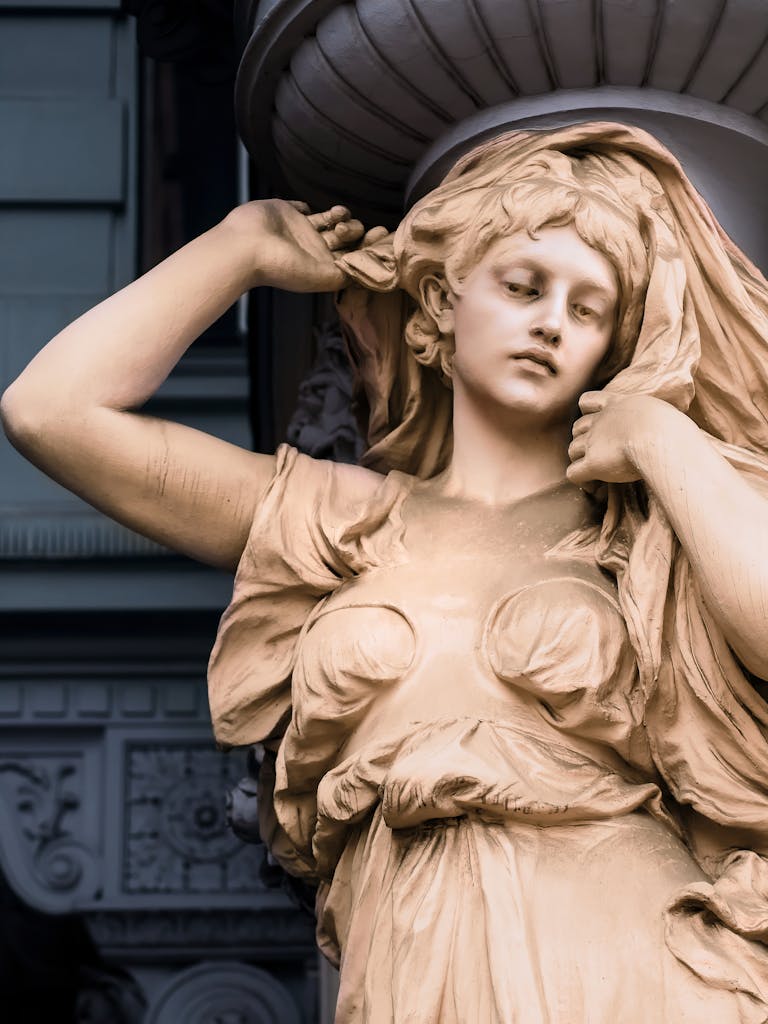
Because fine art continues to appreciate in value, wealthy collectors and institutions desperately need skilled restorers to preserve their investments. I can tell you firsthand, this business commands serious respect and premium pricing.
You’ll need specialized training in chemistry, art history, and traditional techniques. Start by apprenticing under established conservators, then obtain certification from recognized programs. I’ve never seen a profession where expertise translates so directly into financial power.
Your clients include museums, auction houses, insurance companies, and private collectors with pieces worth millions. A single restoration project can earn $50,000 to $200,000, depending on the artwork’s complexity and value.
The barrier to entry protects your market position. Few people possess these rare skills, giving you tremendous leverage when negotiating contracts with elite clientele. Like any service business, you’ll want to develop a comprehensive business plan that outlines your target market, competitive advantages, operational workflows, and financial projections to ensure long-term profitability.
Mobile Art Party and Workshop Services
Since you can literally bring creativity to your customers’ doorsteps, mobile art parties represent one of the most scalable art businesses I’ve encountered. You’re not tied to expensive retail space, and I can tell you that parents will pay premium prices for convenience. You’ll tap into birthday parties, corporate team-building events, and adult social gatherings.
Your mobile setup gives you incredible flexibility:
- Higher profit margins – You eliminate rent overhead while charging $35-50 per participant
- Diverse revenue streams – Birthday parties, bachelorettes, corporate events, senior centers
- Repeat customer potential – Satisfied parents book you for multiple children’s celebrations
- Seasonal adaptability – Indoor winter workshops, outdoor summer painting sessions
I’ve never seen a mobile art service struggle for bookings once they establish their reputation locally. Similar to pet event planners, you’ll need to research local regulations and obtain necessary permits for hosting creative gatherings in various venues.
Digital Art and NFT Creation
Although the NFT market has cooled from its 2021 peak, digital art creation still offers serious income potential for artists willing to master the fundamentals. You’ll need to develop your unique style using programs like Procreate, Photoshop, or Blender for 3D work.
Start by creating consistent, quality pieces and sharing your process on social media. Platforms like Foundation, SuperRare, and OpenSea still generate real revenue for dedicated creators. The key is treating this as a legitimate business, not a lottery ticket. Build relationships, deliver value consistently.
I can tell you that successful digital artists focus on building genuine communities first, not just chasing quick sales. I’ve seen artists earn $500-5000 monthly by offering utility-based NFTs, like membership tokens or gaming assets. Digital artists can also leverage Pinterest by creating pins with text overlays that showcase their transformation process and artistic journey, which generate significantly more engagement than image-only posts.
Art Supply Store and Creative Materials Shop
When artists need supplies, they’re willing to pay premium prices for quality materials they can trust. I can tell you from experience, art supply stores command serious margins because creative professionals understand that cheap materials produce cheap results. You’re not just selling products—you’re selling artistic success.
Smart positioning separates profitable stores from struggling ones. I’ve never seen an art supply business fail when they focus on building relationships with their community of creators.
Here’s your roadmap to dominance:
- Stock professional-grade materials alongside student supplies to capture both markets
- Host workshops and demonstrations to create recurring revenue streams beyond retail
- Partner with local art schools for bulk orders and consistent institutional sales
- Offer custom framing services to triple your average transaction value
Artists invest in their craft relentlessly. Consider expanding into handmade jewelry supplies and materials to tap into the growing consumer demand for unique, artisanal accessories.
Professional Art Framing and Matting Services
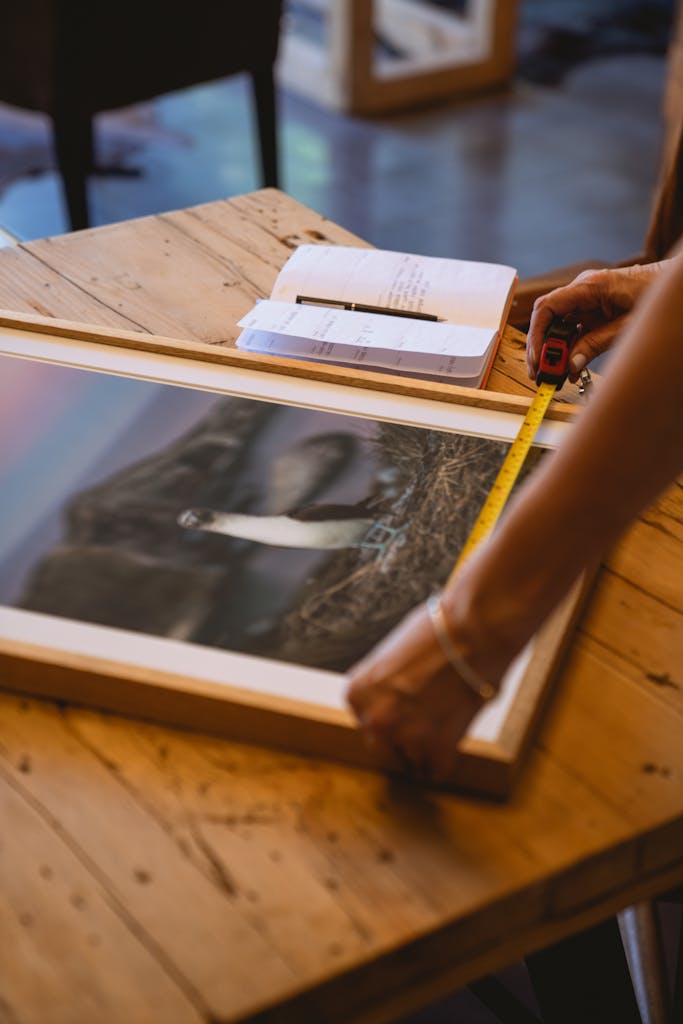
While many people think framing is just slapping glass over artwork, professional framing represents one of the most profitable niches in the art business world. You’re looking at margins that’ll make you smile—often 300-400% markup on materials. I can tell you from experience, customers gladly pay premium prices for quality work because they’re protecting valuable pieces.
You’ll serve collectors, artists, businesses, and homeowners who need museum-quality preservation. The key is mastering conservation techniques, acid-free materials, and UV protection. I’ve never seen a skilled framer struggle for clients once they build their reputation.
Start with basic equipment—mat cutter, joining machine, glass cutter—then expand. Offer services like stretching canvases, mounting photographs, and shadow boxes. Location matters less than craftsmanship here. Just like candle shop owners, you can benefit from using website templates to establish your online presence professionally without the high cost of custom design.
Art Therapy and Wellness Programs
Moving beyond the technical side of art services, you can build a thriving business around art’s powerful healing properties. I can tell you from experience, the wellness market is exploding, and smart entrepreneurs are positioning themselves to capture this massive opportunity.
Art therapy isn’t just feel-good activity—it’s serious business with real results. You’ll serve clients who desperately need healing, stress relief, and emotional breakthrough.
Here’s how you’ll dominate this space:
- Corporate stress-relief workshops – Companies pay premium rates for employee wellness programs
- Veterans’ trauma recovery sessions – Government contracts and nonprofit partnerships available
- Senior care facility programs – Recurring monthly revenue streams with aging population
- Private therapy practice – High-value one-on-one sessions commanding $75-150 per hour
I’ve never seen demand this strong for alternative healing methods. In today’s high-stress environment, self-care is essential for mental and physical well-being, creating unprecedented opportunities for art-based wellness businesses.
Custom Mural and Wall Art Services

Since businesses and homeowners crave unique spaces that reflect their brand or personality, custom mural and wall art services represent one of the most profitable niches in the art world. I can tell you that restaurants, hotels, and corporate offices will pay premium rates for distinctive artwork that transforms their environments. You’re looking at $25-150 per square foot, depending on complexity and location.
I’ve seen artists build six-figure businesses by specializing in children’s bedrooms, corporate lobbies, or outdoor murals. The key is developing a signature style that photographs well for social media marketing. Start by offering smaller accent walls at $500-1,500, then scale up to full room transformations. You’ll need basic business insurance and contracts, but the overhead stays low while profit margins remain incredibly high. Like any successful business, developing financial projections for your mural services helps you understand what success looks like and plan for sustainable growth.
Art Rental and Leasing for Businesses
Because most businesses can’t afford to purchase original artwork outright, art rental and leasing creates a steady revenue stream that benefits both artists and companies. You’re principally building a subscription model that keeps money flowing monthly.
You can tell this approach transforms your art into recurring income rather than one-time sales. Companies refresh their office aesthetics regularly, and you’ll become their go-to solution.
- Target corporate offices, hotels, and restaurants – they need impressive visuals but have budget constraints
- Offer flexible lease terms from 6 months to 3 years with purchase options
- Handle installation, maintenance, and rotation services – they’ll pay premium for convenience
- Create themed collections for different industries and seasonal rotations
Like successful vintage clothing sellers who develop clear shipping policies and personalized service, art rental businesses thrive by building trust through reliable logistics and exceptional customer care.
Children’s Art Classes and After-School Programs
Thousands of parents desperately search for quality after-school programs that keep their kids engaged while developing real skills, and children’s art classes fill this gap perfectly. You’re tapping into a $4.5 billion after-school market where parents willingly pay premium prices for programs that actually matter.
You can tell from watching successful art educators, the key is structured creativity—not chaotic finger painting sessions. Design age-appropriate curricula that build actual techniques: drawing fundamentals for 6-8 year olds, watercolor basics for tweens, digital art for teens. Parents want measurable progress, so create portfolio systems that showcase growth.
I’ve never seen an art program fail when they master three elements: consistent scheduling, clear skill progression, and regular parent communication. Start small with 10-15 students, charge $25-40 per session, and expand strategically.
Art Subscription Box Service
While millions of people crave creative outlets but feel intimidated by art supply stores, subscription boxes deliver curated materials and guidance directly to their doorsteps—creating a $15 billion opportunity that’s exploding right now.
You’re not just shipping supplies—you’re delivering transformation. The recurring revenue model means predictable cash flow, but you’ll need to master logistics and customer retention.
- Target specific niches like watercolor beginners or mixed media artists, not generic “art lovers”
- Partner with established artists who’ll create exclusive tutorials for your boxes
- Price at $35-65 monthly to capture serious hobbyists with disposable income
- Include premium materials that customers can’t easily source locally
I can tell you from watching successful operators, this business demands strategic thinking.
I’ve never seen a market this hungry for creative guidance.
Wedding and Event Art Services
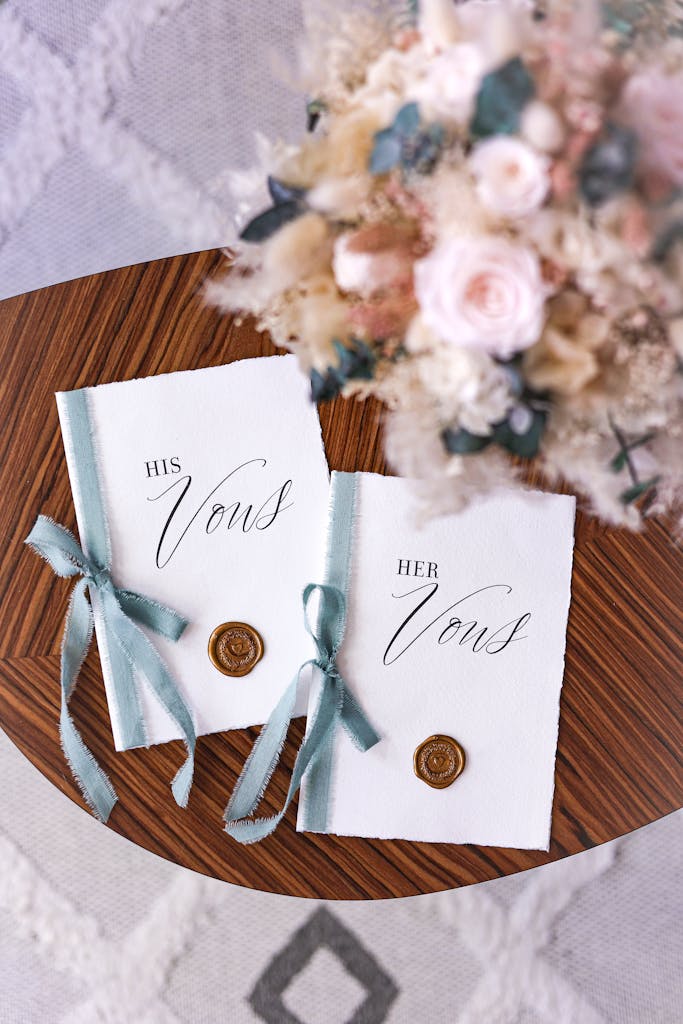
Couples spend an average of $35,000 on their weddings, and they’re increasingly hungry for personalized touches that make their day unforgettable—which puts you in the perfect position to capture thousands per event with live art services.
Live wedding painters command $2,500-$8,000 per ceremony, creating stunning oil paintings while guests watch the magic unfold. You’ll position yourself during the ceremony, capturing the couple’s first kiss or their walk down the aisle in real-time brushstrokes.
Beyond weddings, corporate events pay premium rates for live sketching, caricatures, and interactive art stations. I’ve seen artists pull $300-$500 per hour at company parties, creating personalized portraits that become treasured keepsakes. The key is marketing yourself as entertainment and art combined.
Art Consulting for Interior Designers
Since interior designers handle projects worth $50,000 to $500,000, they’re desperate for art consultants who can source the perfect pieces without the headaches—and they’ll pay you 20-40% commissions plus consulting fees to make it happen.
I can tell you from experience, designers don’t have time to hunt down original artwork, negotiate with galleries, or coordinate shipping schedules. They need someone who understands scale, color theory, and can deliver on budget.
Here’s your roadmap to dominating this lucrative niche:
- Build relationships with 3-5 local interior design firms through networking events and LinkedIn outreach
- Create a curated database of artists organized by style, price point, and availability
- Offer complete project management from sourcing to installation and insurance coordination
- Develop expertise in commercial spaces where budgets are larger and repeat business flows
Print-on-Demand Art Products
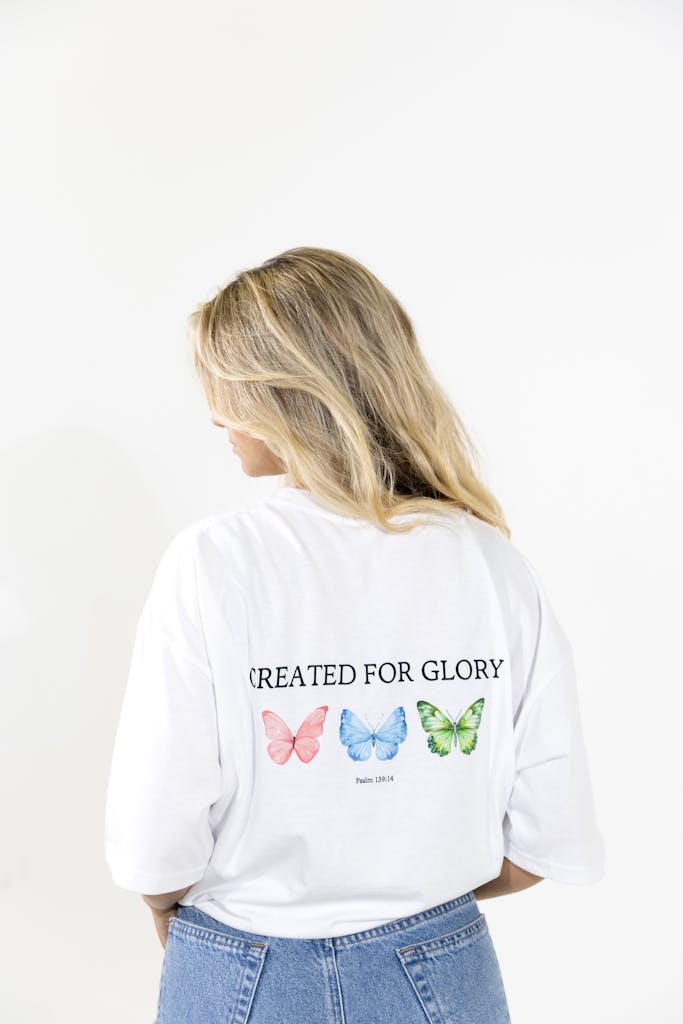
Your smartphone contains a goldmine that most artists completely ignore—thousands of photos, sketches, and creative moments that could generate passive income while you sleep. Print-on-demand platforms like Etsy, Redbubble, and Society6 let you upload your artwork once, then automatically print it on mugs, t-shirts, phone cases, and wall art whenever someone orders.
I can tell you this isn’t some get-rich-quick scheme, but it’s real money. I’ve seen artists earning $2,000 monthly from designs they uploaded years ago. The key is volume and consistency—upload 10-20 designs weekly, test different niches like motivational quotes, pet portraits, or abstract patterns.
Your best advantage? You control the empire. No inventory, no shipping headaches, just pure profit margins while building your brand across multiple income streams.
Art Photography and Documentation Services
While digital platforms offer incredible reach, the art world still runs on physical pieces that need professional documentation. I can tell you that galleries, collectors, and insurance companies demand high-quality photography that captures every brushstroke, texture, and detail. You’re not just taking pictures—you’re creating permanent records that determine value and authenticity.
- Museum-quality documentation using professional lighting setups and color-calibrated equipment
- Installation photography for exhibitions, capturing both individual pieces and complete gallery displays
- Conservation documentation showing condition reports, restoration progress, and damage assessment
- Artist portfolio development creating cohesive visual narratives that sell work and secure representation
I’ve never seen an artist regret investing in proper documentation, but I’ve watched countless opportunities slip away because of poor photography.
Ceramic Pottery and Functional Art Studio
Every successful ceramic studio I’ve visited operates on one simple principle: functional art sells faster and more consistently than purely decorative pieces. You’ll make money creating mugs, bowls, plates, and vases that people actually use daily. I can tell you from experience, customers pay premium prices for handcrafted dinnerware sets, especially when you develop signature glazes or unique forms.
Start with basic wheel throwing classes to build your customer base while perfecting your craft. I’ve never seen a pottery studio fail when they combine teaching revenue with retail sales. Focus on wedding registries, corporate gifts, and seasonal collections. Your overhead stays manageable since clay’s inexpensive, but you’ll need quality kilns and glazes. Build relationships with local restaurants who’ll pay top dollar for custom serving pieces.
Art-Based Corporate Team Building
Corporate executives call me constantly asking for unique team-building experiences that actually produce results, not just another trust fall exercise. I can tell you that art-based workshops deliver measurable outcomes that transform workplace dynamics permanently.
You’ll witness immediate breakthroughs when employees collaborate on creative projects. I’ve never seen anything break down departmental silos faster than a shared painting session where the CFO and marketing intern must work together.
Here’s what delivers real impact:
- Collaborative mural projects that require cross-functional planning and execution
- Clay sculpting workshops where teams build trust through vulnerable creative expression
- Abstract painting sessions that reveal communication patterns and leadership styles
- Mixed-media installations demanding project management, delegation, and shared vision
Smart leaders invest in experiences that create lasting behavioral change, not temporary motivation.
Vintage and Antique Art Dealing
When I started buying my first vintage art pieces twenty years ago, I’d no idea I was building the foundation for a business that would eventually generate six figures annually. You don’t need massive startup capital, just sharp eyes and knowledge that comes from studying the market relentlessly.
I can tell you that successful vintage art dealing hinges on three critical factors: authentication skills, relationship building, and timing. You’ll spend months learning to spot original signatures, understanding provenance documentation, and developing connections with estate sale managers, auction houses, and private collectors.
The real money comes from finding undervalued pieces before others recognize their worth. I’ve never seen a dealer fail who consistently studied art history, maintained detailed records, and treated every transaction as reputation-building.
Custom Jewelry and Wearable Art
Although most people think custom jewelry requires years of metalworking training, I’ve watched complete beginners launch profitable wearable art businesses within six months by starting with simpler techniques like wire wrapping, resin casting, and beadwork.
Complete beginners can build profitable jewelry businesses in six months using simple wire wrapping, resin casting, and beadwork techniques.
You don’t need expensive equipment to dominate this market. I can tell you that the most successful jewelry entrepreneurs I know started in their kitchens, not fancy studios.
Here’s your roadmap to wearable art profits:
- Wire wrapping – Transform inexpensive stones into $50-200 pendants using basic pliers
- Resin jewelry – Cast flowers, glitter, or small objects into clear pieces that sell like crazy
- Beadwork designs – Create intricate patterns that command premium prices
- Fabric accessories – Design scarves, headbands, and statement pieces using textile techniques
Start tonight, dominate tomorrow.
Art Installation and Exhibition Services
Before galleries became comfortable with digital art, I watched smart entrepreneurs make fortunes by solving one critical problem that every artist, curator, and gallery owner faces: how to safely transport, install, and display valuable artwork without damage or drama.
You’re looking at a goldmine here. I can tell you that museums pay $200-500 per hour for professional installation teams, and they’re desperate for reliable service. You’ll handle everything from custom mounting systems to climate-controlled transport, plus lighting design that makes pieces shine.
The real money’s in becoming the go-to expert for high-stakes exhibitions. I’ve never seen gallery owners hesitate when you prove you can protect their six-figure investments. Start local, build your reputation with flawless installations, then expand to serve collectors and corporate clients who value precision over price.
Digital Design and Graphic Arts Agency
Since every business now needs a digital presence that actually converts visitors into customers, I’ve watched graphic design agencies become the backbone of modern commerce. You’re positioned to capture this massive demand if you understand what clients truly need.
Graphic design agencies have evolved from creative studios into essential business partners driving modern commerce through strategic visual solutions.
I can tell you that successful agencies don’t just create pretty pictures—they solve business problems through strategic visual communication. Here’s what drives real profits:
- Brand identity systems that command premium pricing from startups and established companies
- Website design packages combining aesthetics with conversion optimization
- Marketing collateral creation for social media, print, and digital campaigns
- Ongoing retainer relationships providing consistent monthly revenue streams
I’ve never seen a market with more opportunity for skilled designers who position themselves as business partners, not just service providers.
Art Appraisal and Valuation Services
While digital design serves businesses chasing modern customers, there’s an entirely different world where centuries-old masterpieces and contemporary works need expert evaluation for insurance, estate planning, and sales transactions.
Art appraisal puts you in control of determining what collectors’ treasures are actually worth. I can tell you, wealthy families pay serious money for accurate valuations when they’re settling estates or buying insurance policies.
You’ll examine paintings, sculptures, and rare prints, then write detailed reports that banks and courts accept as gospel.
The barrier to entry isn’t small – you’ll need certification from recognized appraisal organizations and deep knowledge of art history, market trends, and authentication techniques. But I’ve never seen appraisers struggle to find work. Insurance companies, auction houses, and private collectors constantly need your expertise, especially when big money‘s involved.
Creative Workshop Space Rental
After decades of artists complaining about cramped home studios and expensive commercial leases, smart entrepreneurs are cashing in by creating shared creative spaces that solve everyone’s problems.
Creative workshop rental businesses are printing money because they’re filling a massive gap in the market. You’re not just renting space – you’re building a community that keeps customers coming back.
Here’s what separates winners from wannabes:
- Premium equipment access – Offer pottery wheels, kilns, professional lighting setups that individual artists can’t afford
- Flexible rental options – Hourly, daily, monthly rates that accommodate different budgets and project timelines
- Storage solutions – Secure lockers and shelving that let artists leave work-in-progress safely
- Cross-selling opportunities – Art supplies, classes, event hosting that multiply your revenue streams per square foot
Artisan Craft Fair and Market Organization
Although most people think craft fairs are just weekend hobbies for retirees, I can tell you that organizing artisan markets is one of the most underestimated goldmines in the creative economy. You’ll collect vendor fees, parking revenue, food concession percentages, and sponsorship deals from local businesses wanting exposure to your targeted audience.
I’ve seen successful organizers pull $15,000-$30,000 profit from single weekend events by charging $200-$500 booth fees to 50-100 vendors. You’ll need permits, insurance, marketing muscle, and strong vendor relationships, but once you’ve established your reputation, artisans will fight for spots at your events. The key is creating experiences that draw crowds consistently, because vendors only pay premium rates when they’re making serious sales at your markets.
Art Book and Catalog Publishing

Moving from live events to print publishing opens up another lucrative avenue that many artists overlook completely. You’re sitting on a goldmine of visual content that can generate serious income through professional publishing. I can tell you from experience, art books command premium prices and establish lasting credibility in ways digital never will.
Here’s your strategic approach:
- Gallery Exhibition Catalogs – Partner with galleries to produce limited-edition catalogs featuring your work alongside established artists
- Coffee Table Art Books – Curate your best pieces into themed collections that appeal to collectors and interior designers
- Artist Monographs – Document your creative journey with behind-the-scenes content, sketches, and finished pieces
- Commission Portfolio Books – Create exclusive publications for high-end clients showcasing custom work
Publishers pay substantial advances for quality art content.
Virtual Reality Art Experiences
While traditional publishing creates lasting value, the digital frontier offers unprecedented opportunities to monetize your artistic vision through immersive virtual reality experiences.
VR art represents the most lucrative emerging market I’ve witnessed in decades. You’re not just selling artwork anymore—you’re commanding premium prices for exclusive digital experiences. Create virtual galleries where collectors pay $500-2000 per private viewing session. Design interactive art installations that respond to viewer movements, selling them to museums for $10,000-50,000 each.
I’ve never seen faster adoption rates than VR platforms like Oculus and HTC Vive. Smart artists partner with tech companies, licensing their creations for corporate events and entertainment venues. You’ll capture multiple revenue streams: initial sales, licensing fees, and ongoing subscription models for updated content.
Art-Themed Travel and Cultural Tours
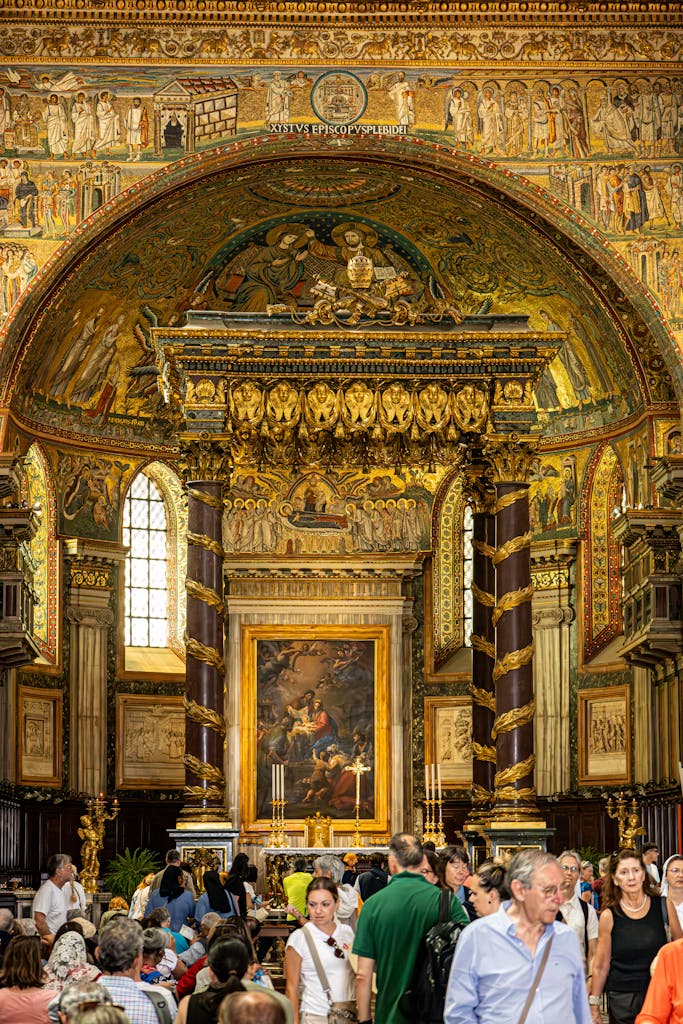
Beyond creating digital experiences, you can leverage your artistic expertise to build a thriving travel business that combines culture, education, and adventure.
I can tell you from experience, art-focused tours command premium prices because travelers crave authentic cultural immersion. You’ll position yourself as the authority who grants access to hidden stories behind masterpieces, local traditions, and artistic movements.
- Museum partnerships – Negotiate exclusive after-hours access, VIP curator meetings, and behind-the-scenes workshops that regular tourists can’t access
- Artist studio visits – Connect directly with working artists, arrange private demonstrations, and offer collectors first access to new works
- Historical art walks – Design neighborhood tours highlighting street art, architectural details, and cultural significance most guides miss
- Hands-on workshops – Incorporate pottery classes, painting sessions, or craft demonstrations using traditional local techniques
Conclusion
You’ve got twenty-eight solid paths to turn your artistic passion into profit. I can tell you that success in art business isn’t about waiting for inspiration—it’s about choosing one direction, committing fully, and executing consistently. Whether you’re restoring masterpieces or creating NFTs, the market rewards dedication over talent alone. Pick the opportunity that matches your skills, start small, and build systematically. Your art business journey begins with that first decisive step.




Pingback: 21 Easy Painting Projects That Generate Passive Income